iFi Audio Pro iCAN
L’Amplificatore cuffie Pro di iFi Audio in prova
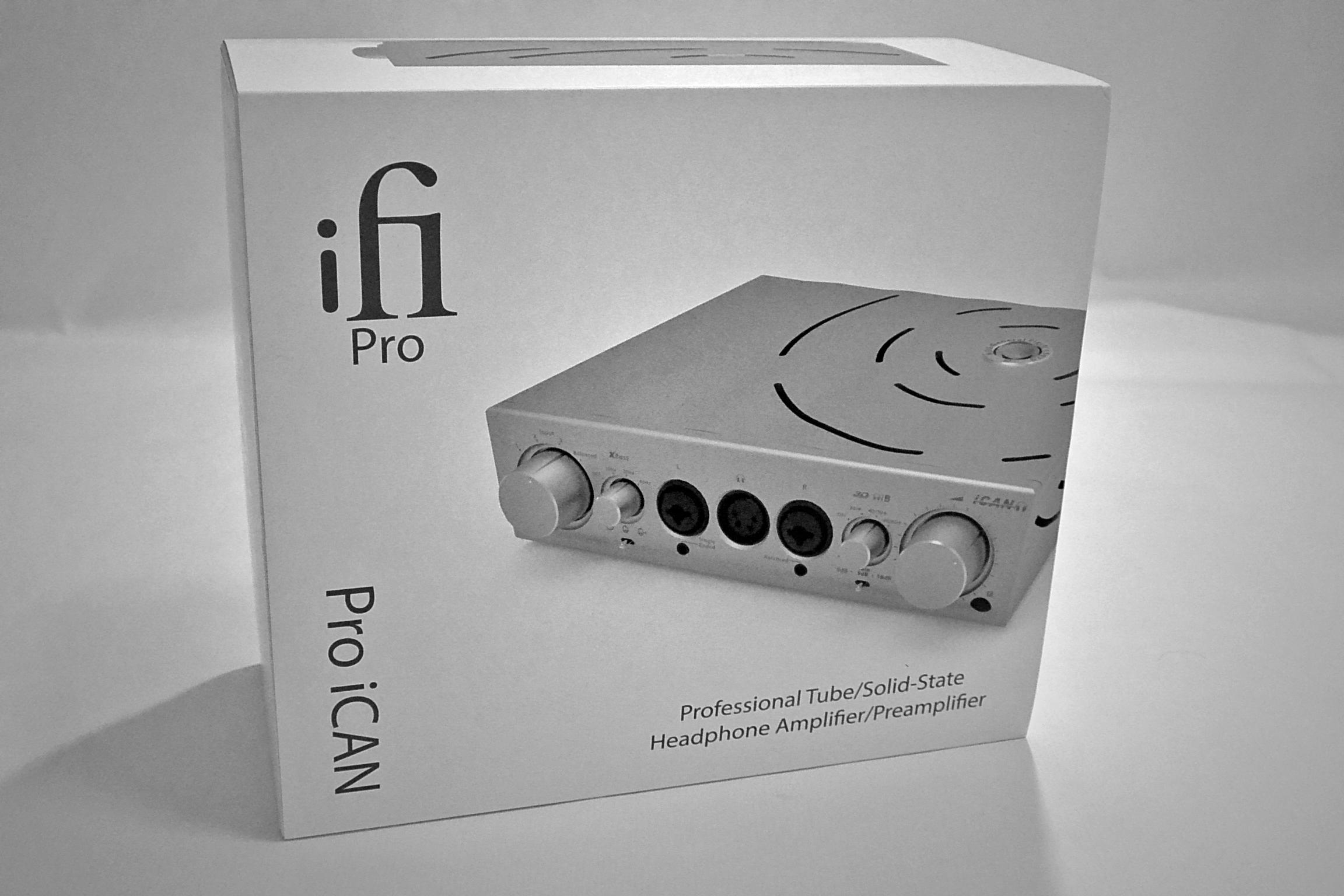

Introduzione
A onor del vero, specie nel campo dell’audio consumer, alcune aziende sono più brave di altre nel creare delle aspettative, dell’interesse o più semplicemente a far venire la bava alla bocca anche all’audiofilo più smaliziato. Stiamo parlando in particolare di quello che volgarmente oggigiorno viene chiamato "hype" un termine quasi slang che richiama il termine eccitazione per un evento o un prodotto del quale si sa molto poco e che non reca ancora una data certa di commercializzazione.
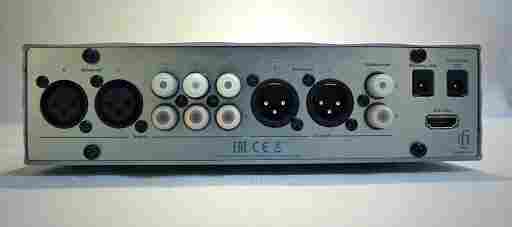
Per ottenere dell’hype ci vogliono ingredienti come un abile politica di marketing unita ad un sapiente dosaggio di immagini e contenuti da elargire a piccole dosi al potenziale cliente al fine di attirarne sempre più l’attenzione. Pertanto se dovessimo pensare ad un azienda che è stata molto abile ad attuare tutto questo per la sua ultima creazione, uno dei primi nomi che ci verrebbero in mente sarebbe quello di iFi Audio. Il nome e la storia di iFi Audio sono stati menzionati svariate volte nelle nostre recensioni tant’è che sarebbe superfluo raccontarvi che hanno sede in Inghilterra e sono specializzati in apparecchi e accessori audio dalle dimensioni molto contenute. Una loro peculiare caratteristica questa che però è stata soggetta recentemente ad un cambiamento. Non un cambiamento radicale sia ben chiaro come nel caso dell’azienda madre ovvero la AMR (Abbington Music Research) da cui iFi Audio è nata e la quale si è resa famosa per le dimensioni importanti dei suoi apparecchi ma comunque un cambiamento di tendenza piuttosto netto. Perché iFi Audio per noi utenti è sempre stata sinonimo di "micro", di "nano" per citare alcune linee dei suoi prodotti o comunque di qualcosa che può stare comodamente nelle tasche dei pantaloni. Ora con l’introduzione della nuova serie Pro avrete bisogno di usare entrambe le mani per trasportarla e di una scrivania su cui riporla dato che la prima cosa che salta agli occhi è l’abbondanza di manopole e connessioni di tutti i tipi. Di cosa stiamo parlando? Dite la verità non vi è venuta una certa curiosità nel volerlo scoprire? Siete stati anche voi colti dall’hype? Bene ci stiamo riferendo al nuovo prodotto di punta di casa iFi Audio per quanto riguarda l’amplificazione in cuffia ovvero l’iCAN Pro oggetto di questa nostra prova.
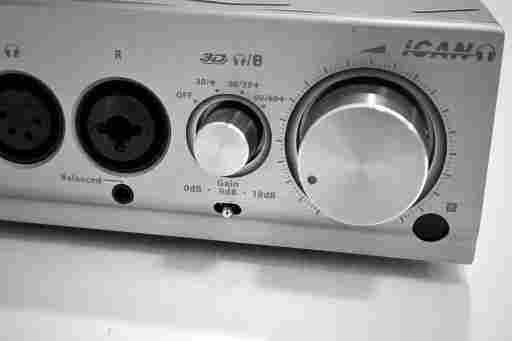
Design
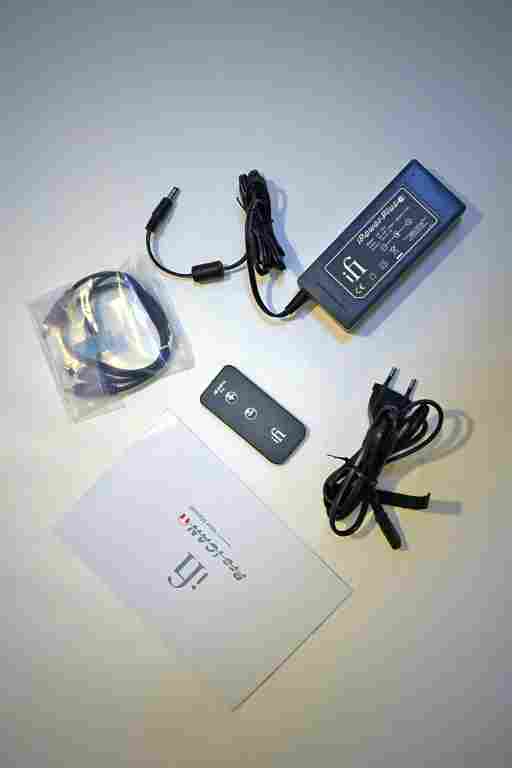
Around this device various threads have been let loose in time for the first photos circulated on some Japanese forums, subsequently we had a chance to read the instruction manual on the net and finally some first impressions of some working ProiCAN prototypes given by some users. The finished product made and marketed by iFi Audio showed up in our studio a few months after its official listing and we really couldn't wait to get our hands on it. Yes, you read right because this time we have to use both hands when handling it and we realised it the minute we saw the size of the box. Usually iFi Audio products including the box can be held in one hand but now the situation has changed. The elegant packaging bearing a picture of the product contains: the amplifier, the external power supply, the instruction manual, a remote control and a pair of RCA cables. From the description it would seem that we are dealing with a normal headphone amplifier but things aren't as they seem. If for the past year there has been enormous hype it was for a good reason. The new Pro iCAN by iFi Audio is a professional balanced headphone amplifier which not only acts as a preamp and includes, as we shall see, all kinds of inputs and outputs but allows the user to select 3 different modes namely a solid state and two tubes. The outer chassis of the Pro iCAN is brushed aluminum. On the front panel, to the left of the power button there is a knob that allows you to select the desired input whether balanced or unbalanced. Next to it there is a smaller knob that allows you to select the boost level (+12 dB) for low frequencies of 10, 20 and 40 Hz. Under it there's a three position switch that allows you to use the amp in three different modes: Solid State, Tube and Tube+. The solid-state mode uses iFi Audio's own topology called "True Differential Balanced®". In practical terms the amplifier is really balanced from the signal input to the outputs. The Pro iCAN operates with an internal fully differentiated signal that allows the signal itself to be composed of two equal-level signals with opposite polarity. Compared to a single-ended design with exactly the same circuit, "True Differential Balanced®" technology reduces the noise floor by 3dB, and also dramatically lowers the level of harmonic distortion, or THD. In addition, it allows the level of the signal to double producing about 9dB (or 3 times) of higher dynamic range. Everything is managed by a volume control made by ALPS in Japan and made exclusively for this product. The internal circuit is composed of a Discrete J-FET input stage fully balanced and a pure MOSFET output stage in A class DC-coupled. The tube mode that includes the use of two NOS General Electric 5670, is divided between Tube and Tube+ that can be selected by the user. The particularity of the Tube+ mode is its ability to generate a greater number of harmonics minimizing the level of the amplifier feedback which leads to a different result between the level of harmonics produced and the performance of the transients. Another peculiarity, also on the front panel of the Pro iCAN, is the presence of every type of headphone input both balanced and unbalanced. For the balanced inputs there are two 3-pin XLR for left and right channels including a balanced connection for double 6,3 mm jack or a single 6.3 mm jack for the unbalanced one at the center of each one. At the center between the balanced left and right inputs we have a balanced 4 pin xlr stereo connector. There are also 2 3.5 mm inputs, one balanced and one unbalanced. To the side of the inputs there is a small knob with 3 different adjustments for "3D Holographic Sound" function that allows you to create a wider soundstage and improve the stereo image of the recordings. At the bottom of it there's a selector with three positions for the gain level: 0, +9 and +18 dB. The volume knob completes the front panel. The rear panel contains the balanced input and 3 unbalanced inputs. Having also a pre-amplifier function there are a pair of balanced and unbalanced outputs. Finally, in addition to the socket for the external power supply connection there are two outlets: the first one it's called DC loop-out and the second one is called ESL links, that according to the user manual is for future additional modules to connect electrostatic headphones. The upper part of the product also has a unique design as it shows a sort of small glass porthole from which concentric ventilation apertures radiate. The porthole indicates the position of the two NOS tubes which once activated emit a nice orange glow.
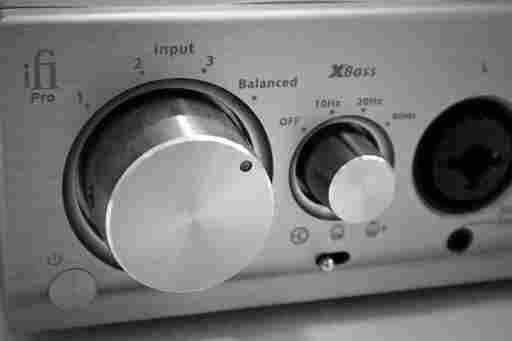
Listening test
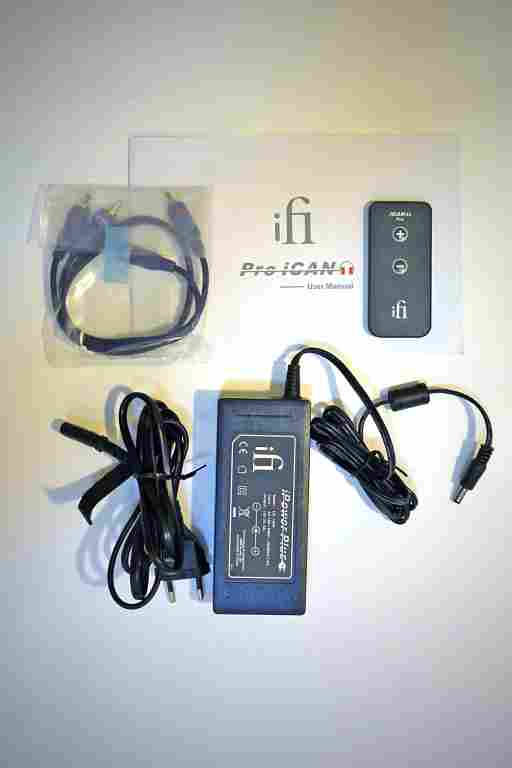
We never get tired of repeating this but all products used in our studio before being reviewed are submitted to a rigorous burn-in period. Therefore, we left the Pro iCAN Pro burn-in for a week before doing any serious listening. The headphones used for testing were the Sennheiser HD800S, the Audeze LCD-X, the Kennerton Odin, the Sennheiser HD650 and the Akg K7XX. The DACs involved were the Tobby by Firestone Audio to which we made some small hardware upgrades and the STEREO96 DAC by Mytek which we have combined with the excellent iLINK an USB-SPDIF converter by iFi Audio. The main audio source was our DAW on which we use programs such as Fidelizer, Process Lasso Pro. As far as the players are concerned, we used JRiver and Foobar Darkone 4 with our custom dsp. The other amplifiers used during the test were the Audio-GD Master 9 and the HPBA2-S by Qes Labs, both balanced and solid state. The listening test was divided between solid-state and Tube + mode leaving the unit to reach the optimum operating temperature especially in both Tubes mode. It must be said, however, that in all modes, the Pro iCAN got quite warm given its A class output stage, therefore, we strongly advise you to always leave a large space above the amplifier. If we wanted to summarize in short our first impressions of our listening tests we would definitely talk about volume and power. In addition to that, with more than 14 watts into a 16 ohm load the Pro iCAN on specs seems to act as a true thoroughbred and these, our first impressions, became more concrete and widespread as the listening test went on. But let's run through in order. Connecting in unbalanced mode and with the stock cable, the AKG K7XX immediately showed us a nice synergy between the small headphone amplifier and the Austrian headphone. The tone appears substantially balanced with a wide soundstage and a very good yield of voices. The bass is more prominent than we thought this headphone could express. Passing from the solid-state mode to the Tube+ mode there is an increase in the number of harmonics that makes listening more musical and euphonic. Driving them with the same headset and the Master 9 while using the same songs, the bass sound becomes even deeper at the expense of a slightly recessed medium tone. With our modified Sennheiser HD650 connected in balanced mode to the Pro iCAN we immediately realized that in Solid State mode, the combination is better and more immersive than the one obtained with the AKG K7XX. The headset picks up transient speed especially with regards to the attack and the release of notes adding a precise and articulated bass. Although the yield of the medium is expressed in a precise manner there's a minor extension of the high range. If we pass to the Tube+ mode the mids acquire greater body and fluidity at the expense of bass incisors which give greater impact with a wider range of the soundstage. Then if we connect, always in balanced mode, the HD650 to Master 9, we hear a greater opening at the top but a more reduced soundstage than that provided by the Pro iCAN. Another thing that we noticed is the ability of this combo to unmask recording defects. Turning then to the use of 'her majesty' the Sennheiser HD800S connected in balanced mode to the amp, we immediately noticed a very good yield of voices and acoustic instruments. The low frequencies have good quality and quantity with a considerable speed on transients. With the Tube+ mode the bass becomes more rounded, the soundstage is more open and gives to the overall timbre a greater sweetness on medium-high and high frequencies. With the use, always in balanced mode, of the Master 9 the headphone gains a little more body on bass and a slightly faster speed of transients. When we made a complete direct comparison between the amplifiers in our possession, we also put our HPBA2-S by Qes Labs produced specifically for the HD800S in the field. In no uncertain terms can we make a comparison because the performance of HD800S with this amp is such as to leave the other two lagging behind, but we have already spoken extensively about this in our previous review on the new flagship by Sennheiser. After this first round we seemed to figure out in a rather clear way, that the Pro iCAN as well as being a versatile product, is an amplifier that's definitely in its element with different impedance loads, without posing problems when providing a large amount of power and volume. Wishing then to complete our test, we connected our Audeze LCD-X in balanced mode to the new iFi Balanced Audio Amplifier. We noticed immediately a good midrange opening and a good yield of the soundstage. The bass frequencies, however, were a little swollen not going deep to the level we are used to. We noticed even a slight tendency of the amplifier to forgive some recording defects. With the Tube+ mode the bass became a little softer for impact and quantity. The headset takes on greater musicality becoming a little cheekier in the overall yield and even less analytical on the recording defects. Then if we use the LCD-X with what is our reference amp or the Master 9, the headset is much faster on bass which becomes more articulate as well as the yield of the transients. To the detriment of an albeit less expansive soundstage, the tone of the headset becomes much more balanced and open revealing more mercilessy the flaws of the recording. With the Kennerton Odin things get interesting as this orthodynamic Russian headphone shows a certain difference in performance according to the cable used. At the end we saw that using the cable with the wider section was the best way to interface the headset with Pro iCAN. The reconstruction of the soundstage is excellent combined with a clean and clear extension at the top. The yield of the voices is very good, lesser are the ones of the low frequencies that are not extended as with the LCD-X and the medium-low are slightly in evidence. With the Tube+ mode the bass becomes slightly less restrictive, listening becomes more musical and the recording flaws are softened. With the Master 9 the Odin gains more speed bass extension and better reveals the imperfections of the source.
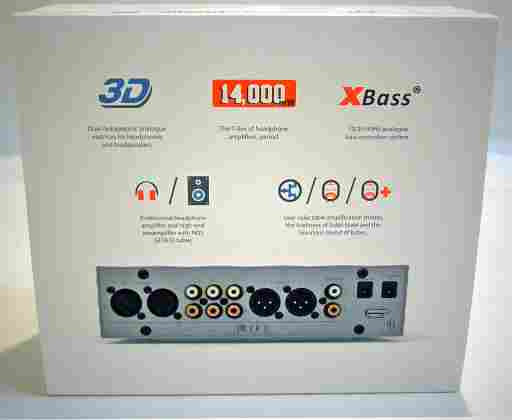
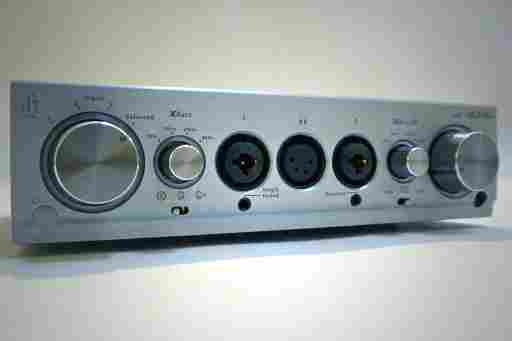
Final thoughts
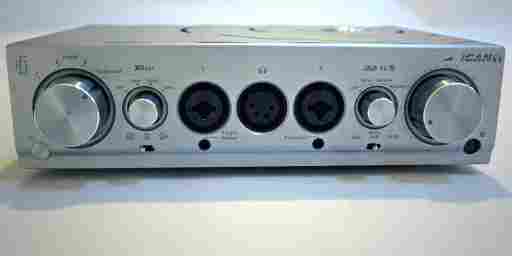
We must give credit to iFi Audio for being able to create a truly versatile product that can satisfy both the professional and the audiophile for the number of connections in 3 different listening modes. We think it's not easy to realize a headphone amplifier that encloses two distinct technologies such as tubes and solid state. Lastly, we consider that it's not even been simple to realize a product that doesn't minimally break down the type of headphone connected and that also maintains a consistent timbre on the different levels of the output stage gain. It's a product that we believe definitely goes well along with dynamic headphones. Less so with orthodinamic ones. But don't be fooled by the small dimensions and the weight even if in our opinion it's a rather annoying flaw that the amplifier easily tends to slide laterally on both sides when you detach the headphone cables or line input cables. We were impressed very much by the amount of power delivered and especially by the volume available that we think that the Pro iCAN wouldn't have any difficulty to drive two famously tricky headphones such as the HiFiMan HE-6 and the Abyss. We can define it as a jack of all trades amplifier that easily adapts itself to different impedance loads. The Pro iCAN could be a good solution for those with a large park of headphones who don't want to go crazy in buying more than one amplifier. For the price at which it's sold, and for the solutions offered we'd like to advise it. Besides that, to be honest you'll take two for the price of one, sorry if that's not enough.
Personal Opinion
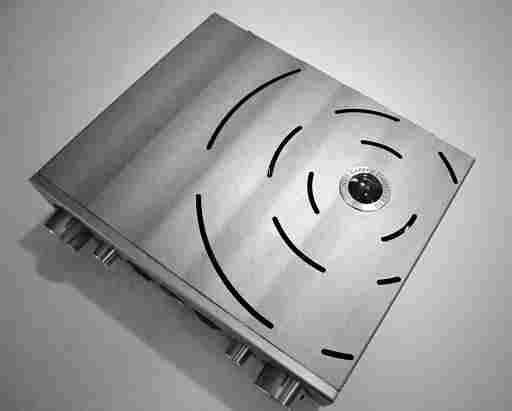
Personally, I can say that all the clever hype created by iFi Audio around the Pro iCAN has been almost completely satisfied. Although it wasn't possible to change the power cord stock I got to see that the amplifier's power supply encompasses the latest technology called iFi iPower. In the same way I was able, just for fun, to improve the performance of Kennerton Odin simply moving the bass boost switch to the first position making a very pleasant combination. I preferred to do, and I do want to emphasize 'preferred', a bare and raw test of the amplifier, without any of the supplied optionals such as the 3D Soundstage and the bass boost. I was positively surprised by the ability of iFi Audio to encompass so many things in an object of ergonomic design and small dimensions that allows anyone to use two amplifiers with a single product: one solid and one tube (expect a time of 20 seconds between the transition from one mode to the other). Because in my vocabulary there's no definitive word especially regarding headphone amplifiers, the first term that comes to mind is 'versatile' and it's the one that best suits the Pro iCAN. Just because it's a very good amplifier for the excellent bang for the buck and its being definitely a jack of all trades puts the Pro iCAN among the products that deserve some consideration.
Score
- Scoring110
- Sound quality [1]
8 - Bang for the buck [2]
9 - Measures [3]
10 - Build quality [4]
8 - Versatility [5]
10 - Overall rating
9
- 1. The sound quality is really very good
- 2. The bang for the buck is very high
- 3. Specs have very interesting values
- 4. The construction and the cabinet quality is very good
- 5. Versatility is very wide in the world of headphone amplifiers













